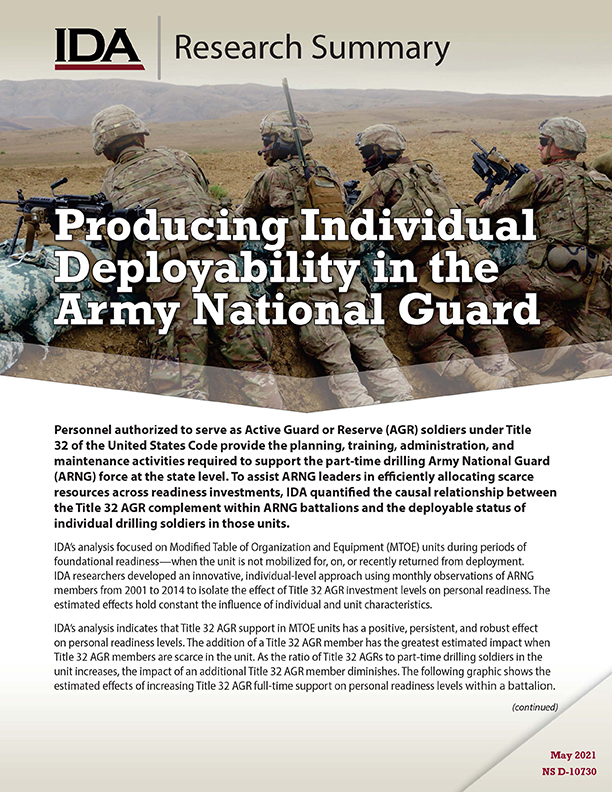Producing Individual Deployability in the Army National Guard
May, 2021
IDA document: D-10730
FFRDC: Systems and Analyses Center
Type: Research Summary/Research Insights,
Talent Management
Division: Strategy, Forces and Resources Division
Authors:
IDA document: D-10730
FFRDC: Systems and Analyses Center
Type: Research Summary/Research Insights
Division: Strategy, Forces and Resources Division
Authors:
Authors
Julie A. Lockwood
See more authors

